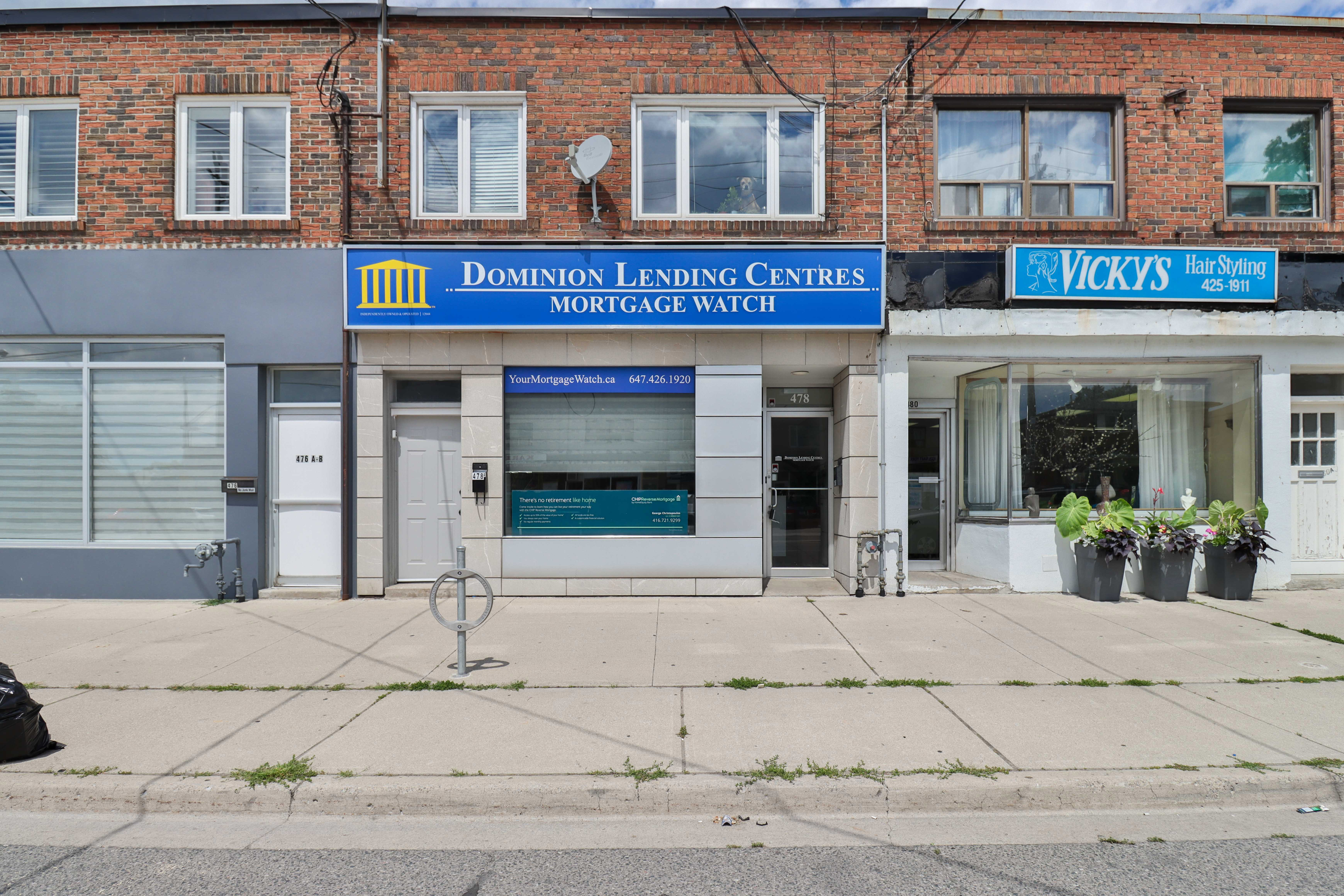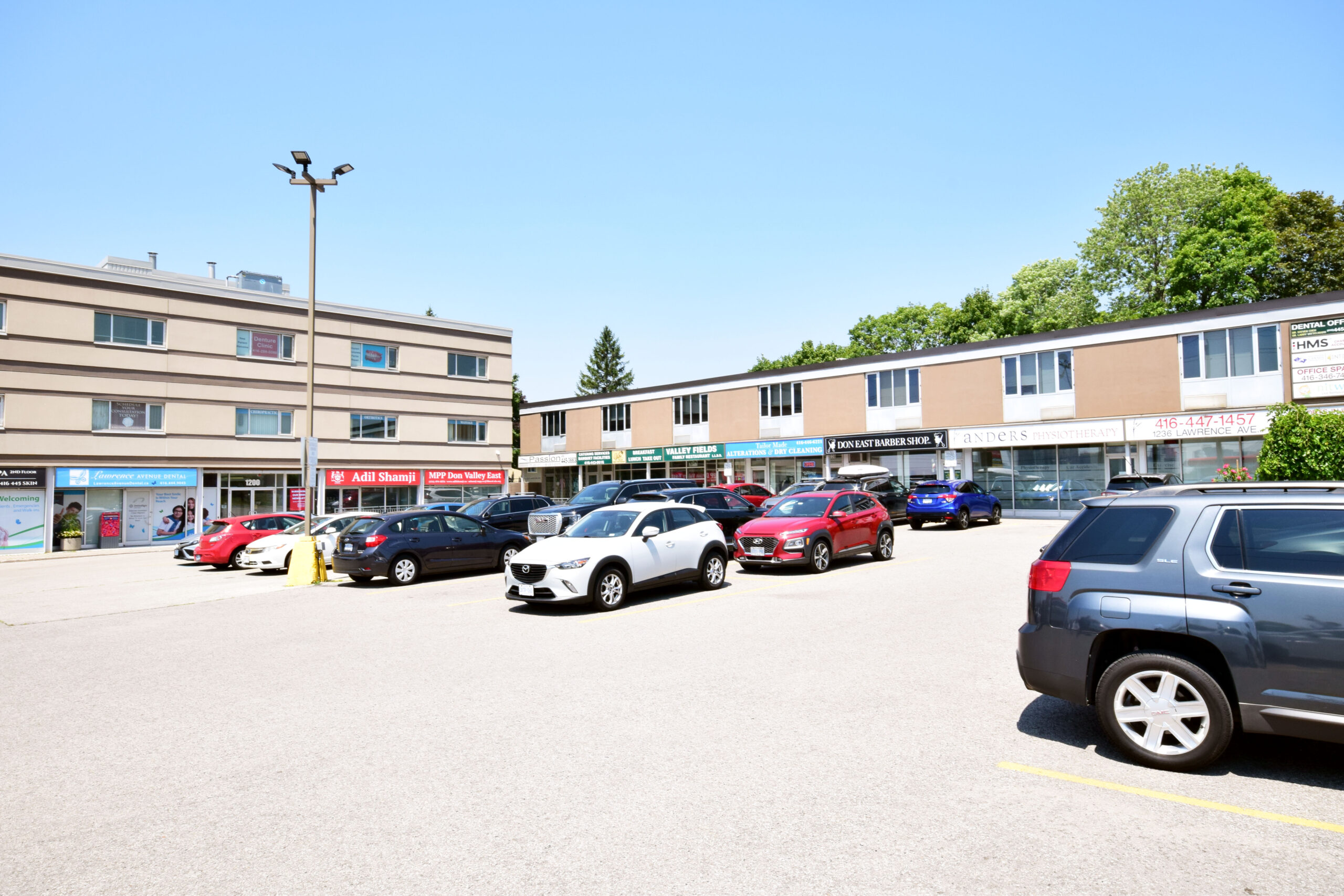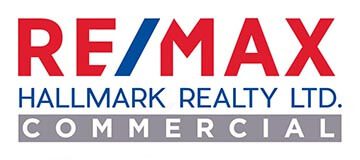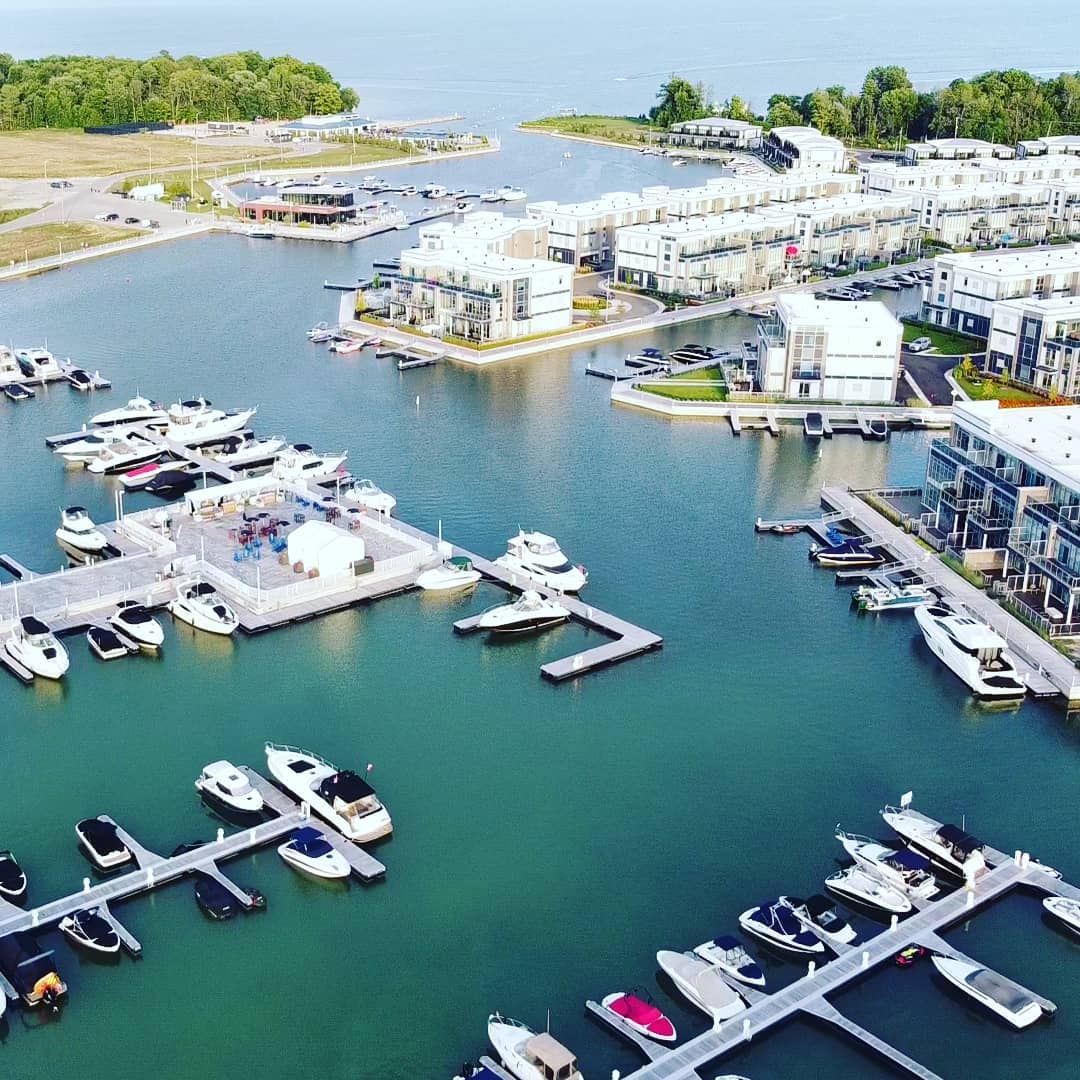
Longtime U.S.-based investor and agent Joe Killinger joins host Chad Griffiths for this episode of The Industrial Real Estate Show.
Their discussion touches on what successful agents are focusing on right now, incorporating social media into your brokerage business, tactics to improve your networking skills and other topics related to the current industry environment.
This interview was conducted live, so comments and questions from participants will appear in the accompanying chat window.
Killinger has been active in the real estate industry for three decades, wearing different hats and at times multiple hats!
Over the years he has been an agent, investor, syndicator, founder and operator of companies as well as properties in which he invests.
During his 30 years in the business, he has been responsible for the sale of and/or directly involved in the marketing of over 5,900 assets, resulting in closed transactions totalling over $900 million throughout the United States.
Source Real Estate News EXchange. Click here to read a full story

UPDATED: Dream Industrial REIT (DIR-UN-T) and Singapore-based investment manager GIChave formed a joint venture to acquire Summit Industrial Income REIT(SMU-UN-T) in an all-cash transaction that values the trust at approximately $5.9 billion.
The Monday-morning announcement indicated Summit unitholders will receive $23.50 per unit in cash for their shares. The investment is a 31 per cent premium to Summit’s closing price on Nov. 4, a premium of 33.4 per cent to its 20-day weighted average price and a 19.5 per cent premium to Summit’s current consensus estimated NAV of $19.66 per unit.
“We are pleased to provide an immediate and certain premium value to our unitholders through this all-cash transaction with GIC and Dream,” said Paul Dykeman, chief executive officer of Summit, in the announcement. “The entire board of trustees and management team are proud to have executed on our strategy to develop and aggregate an attractive, diversified portfolio with a team that is dedicated to delivering best-in-class services to our tenants, and this value optimization transaction represents a successful culmination of these efforts.
“We are confident this transaction is in the best interest of the REIT and unitholders.”
The arrangement is structured with GIC as a 90 per cent partner, and Dream holding the other 10 per cent. Dream Asset Management will be the property manager for the venture.
“Highly strategic transaction” for Dream
The transaction remains subject to unitholder and regulatory approvals, and is expected to close in early 2023.
“We are pleased to bring GIC’s expertise in real estate investing together with Dream’s 25 years of experience as a world-class real estate developer, owner and asset manager. Through our partnership, Summit’s assets will be positioned for continued success,” said Lee Kok Sun, chief investment officer of real estate for GIC, in the release.
“Summit has a premier portfolio of industrial properties defined by strong sector fundamentals, resilient cash flows, and stable market rent growth in key markets across Canada,” said Adam Gallistel, head of Americas real estate for GIC, in the release. “This is another strong addition to GIC’s global real estate portfolio.”
The Summit acquisition represents what Dream calls a “highly strategic transaction”, growing its exposure to the Canadian industrial market, diversifying its revenue streams through growth of its property management vertical, and introducing a new source of growth capital in high-growth industrial markets.
“We are excited to announce this transformational transaction,” said Brian Pauls, chief executive officer of Dream Industrial REIT, in the announcement. “Combining with Summit will add scale and quality to our Canadian platform and amplify our fee generation business. The commitment from GIC, a best-in-class, global sovereign wealth fund investor, to partner with DIR on this large-scale transaction is a testament to the quality of our employees, platform and vision as a leader in the Canadian industrial space.
“This transaction will provide DIR with the ability to grow accretively with a more diversified source of growth capital.”
The transaction will significantly increase Dream’s property management business. Upon closing, Dream Industrial will manage 69 million square feet across Canada, USA and Europe, including 32 million square feet on behalf of its institutional clients in North America.
It will also more than double the scale of Dream Industrial’s Canadian industrial portfolio under management, with total GLA of 43 million square feet. Dream Industrial’s pro forma exposure by owned GLA will be approximately 53 per cent in Canada, 41 per cent in Europe and six in the United States.
“We have been impressed by Summit and their continued strong execution and we are thrilled to welcome an exceptional team to Dream,” said Michael Cooper, the founder of Dream Group of Companies and a trustee of Dream Industrial REIT, in the announcement. “Summit’s business fits perfectly with Dream’s experience and management expertise, and we look forward to partnering with GIC.”
GIC and DIR have agreed they will continue to pursue acquisition opportunities in major Canadian industrial markets.
Summit’s industrial portfolio
Over 99 per cent of Summit’s portfolio properties are located in geographies where Dream Industrial already operates. The combined portfolios are focused on “high quality logistics and warehousing assets in Canada’s largest urban markets”, with approximately 60 per cent of total GLA in the Greater Toronto and Montreal Areas.
The Summit portfolio also offers significant opportunity to generate strong future NOI growth. The Summit acquisition will also increase Dream Industrial’s development pipeline from 6.5 million square feet to 11.1 million square feet (on a 100 per cent basis).
The Dream and GIC venture intends to assume Summit’s $925 million of outstanding unsecured debentures, as well as Summit’s existing mortgages.
Dream and GIC have financing through TD Securities to backstop the mortgages, and Toronto-Dominion Bank has underwritten a $400-million revolving credit facility for future liquidity requirements. The financing has been structured with the intent of Dream and GIC maintaining Summit’s current DBRS Limited BBB credit rating with a positive trend.
Summit expects to hold a special meeting of unitholders to vote on the transaction in mid-December Summit will release its Q3 financial results on Nov. 9, but, as a result of this announcement will not host an investor conference call.
About Dream, GIC
GIC is a global investment firm established in 1981. As the manager of Singapore’s foreign reserves, GIC takes a long-term approach to investing across a wide range of asset classes and strategies. These include equities, fixed income, real estate, private equity, venture capital and infrastructure.
Headquartered in Singapore, GIC employs over 1,900 people in 11 major financial cities and has investments in over 40 countries.
Dream Industrial REIT is an unincorporated, open-ended real estate investment trust. As at Sept. 30, Dream Industrial REIT owned, managed and operated 258 industrial assets totalling approximately 46.5 million square feet of gross leasable area in key markets across Canada, Europe, and the U.S.
Dream Industrial REIT’s objective is to continue to grow and upgrade the quality of its portfolio which primarily consists of distribution and urban logistics properties.
Dream Unlimited Corp. is a Toronto-based developer of office and residential assets, owns stabilized income generating assets in both Canada and the U.S., and has an asset management business, inclusive of $17 billion of assets under management across four Toronto Stock Exchange listed trusts, a private asset management business and numerous partnerships.
Dream also develops land and residential assets in Western Canada. Dream expects to generate more recurring income in the future as its urban development properties are completed and held for the long term.
Source Real Estate News EXchange. Click here to read a full story

As it continues to undertake a recently announced strategic review, Slate Office REIT reported gains in net operating income (NOI) and same-property NOI during Q3 2022.
These, along with a number of recent property transactions, were among the topics discussed during the REIT’s Nov. 2 conference call to present its financial and operational results for the quarter ended Sept. 30.
At the end of Q3, Slate (SOT-UN-T) owned interests in 53 properties in Canada, the United States and Ireland totalling 7.32 million square feet of gross leasable area and valued at $1.96 billion.
“In the face of sectoral headwinds, including a rapid rise in interest rates not seen in many years, Slate Office REIT continues to demonstrate its resilience, offering unitholders a stable and attractive distribution yield, trading upside to its well-supported net asset value and a best-in-class management platform,” chief executive officer Steve Hodgson said to open the presentation.
“Our conviction in the office sector remains strong. We know that physical workspace enables collaboration, culture and innovation. At the same time, we understand that in a post-pandemic era, certain tenants and industries will be more significant users of office space than others.
“As such, we’ll continue to position our portfolio to focus on opportunities that align with tenant demand. We believe well-located, high-quality and modern office buildings with growing strong credit tenants will continue to outperform.”
REIT has committed to review operations
G2S2 Capital Inc. issued a news release and an open letter to Slate Office REIT unitholders on Oct. 20 critical of management and trustee decisions in recent years, including a recent $45-million convertible debenture offering.
The release stated a belief that the trust makes the interests of unitholders secondary to those of Slate Asset Management, its external manager.
Halifax-based G2S2, a private investment holding company, is Slate Office REIT’s largest unitholder.
Slate Office REIT announced a week later it had created a committee of five independent directors, chaired by Tom Farley and Michael Fitzgerald, to oversee the review.
The trust will also retain a financial advisor for the process.
“Notwithstanding the REIT’s attractive assets and longer-term upside, our board of trustees recognizes that market disruptions related to the pandemic and elevated levels of inflation continued to weigh on the valuations of publicly traded REITs, creating a divergence between asset values and unit price,” Hodgson said during the conference call.
“As a board and management team, it is our responsibility to consider every possible opportunity to surface value for our unitholders. To this end, after quarter end, the board formed a special committee of independent directors to oversee a review of strategic alternatives for the REIT as we continue to navigate a highly volatile macro-economic environment.
“The strategic review will play a key role in identifying additional ways to maximize value for all unitholders. All of our routine operations and investment activities will carry on as normal during this period and we intend to provide an update once the process is completed.”
The REIT’s unit price closed at $4.50 on Nov. 2. Its 52-week high is $5.30 while the corresponding low is $4.21. The trust has a market cap of $360.78 million.
Increased NOI and decreasing debt ratio
NOI in the quarter was $26.86 million, a 16.7 per cent increase from a year earlier. Same-property NOI increased by about $500,000 over the prior quarter and $957,000 from a year earlier.
Slate Office REIT’s liquidity was comprised of $37.1 million in cash and $14.61 million in undrawn revolving facilities on Sept. 30.
The Toronto-headquartered REIT, which also has offices in Chicago and Dublin, had a loan-to-value ratio of 58.4 per cent at the end of the third quarter. That was down from 59 per cent in Q2.
Transaction activity
Slate Office REIT sold a two-tower, 405,407-square-foot property, which Hodgson said had tenant and capital risk, at 95-105 Moatfield Dr. in Toronto to an undisclosed purchaser for $97 million on Sept. 23. That was a 12 per cent premium on the purchase price.
The building at 95 Moatfield is fully leased to Kraft Canada and 88 per cent of 105 Moatfield is leased to Thales Rail Signaling Solutions.
Following the end of Q3, the REIT closed on the acquisition of a newly retrofitted class-A property in Chicago’s Lake Forest area for $27.3 million.
It’s adjacent to a lab building owned by Pfizer and anchored by a 10-year lease with Pfizer in a portion of the building, with significant upside on occupancy of the remainder.
“This is new space to the market,” said Hodgson. “Pfizer previously occupied the entire building.
“It’s a beautiful building. It’s certainly the best in that immediate area and probably the second-best in the region.”
Retrofit work will be done in the lobby of the two-winged building, which includes conference space and fitness facilities.
Slate is looking to lease the space for triple-net rents of $18 per square foot, with 50-cent annual escalations.
“We expect quite a bit of demand and Pfizer doesn’t have any exclusives in their lease preventing us from leasing to any other life science or pharmaceutical companies,” Hodgson noted.
Leasing activity
Slate Office REIT completed 109,060 square feet of leasing in 11 renewal and 12 new deals in the quarter at a weighted average rental rate spread of 11.9 per cent. The results were primarily driven by rental rate uplift in Atlantic Canada and strong demand in Ontario.
Fifteen leases totalling 101,322 square feet were not renewed or were vacated.
“There were three that were over 5,000 square feet and the rest were spread out amongst the portfolio and small in nature,” Hodgson said.
The weighted average in-place rent across the portfolio was $19.19 per square foot, 5.3 per cent below current market rent, providing significant opportunity for the REIT to continue increasing rental income.
The weighted average lease term in Slate Office REIT’s portfolio is 5.6 years, and 65.1 per cent of tenants are government or high-quality credit tenants.
“The new leasing that we did in our portfolio had 9.2 years of average term, so that’s clearly a sign that tenants are committing long-term to office space,” said Hodgson.
The portfolio’s occupancy was 81.9 per cent at the end of Q3, down from 83.6 per cent the previous quarter.
195 The West Mall and Irish acquisitions
Part of that is attributable to a phased vacancy by SNC-Lavalin at 195 The West Mallin Toronto, which now has 160,709 square feet available on its 11 floors.
Hodgson said the building, in an area where the trust also owns other properties, is receiving plenty of interest from potential tenants.
“SNC vacated at a rent of $16.50 (per square foot),” Hodgson said. “The starting rents that we have in The West Mall now are $18 to $19.”
Slate Office REIT completed the $254.8-million acquisition of the portfolio of office, life science and light industrial properties owned by Yew Grove Office REIT in Ireland in February.
There has been interest in the portfolio’s vacant spaces, according to Hodgson.
“We’ve made some changes to the teams in place, as well as the third-party sales teams in place, and we’re sort of relaunching it with a marketing campaign more in line with what Slate’s accustomed to elsewhere,” Hodgson explained.
Hodgson expects the REIT’s occupancy to be relatively flat in Q4 because new leasing won’t result in occupancy until the new year in order to give tenants time to fit out their space.
Source Real Estate News EXchange. Click here to read a full story
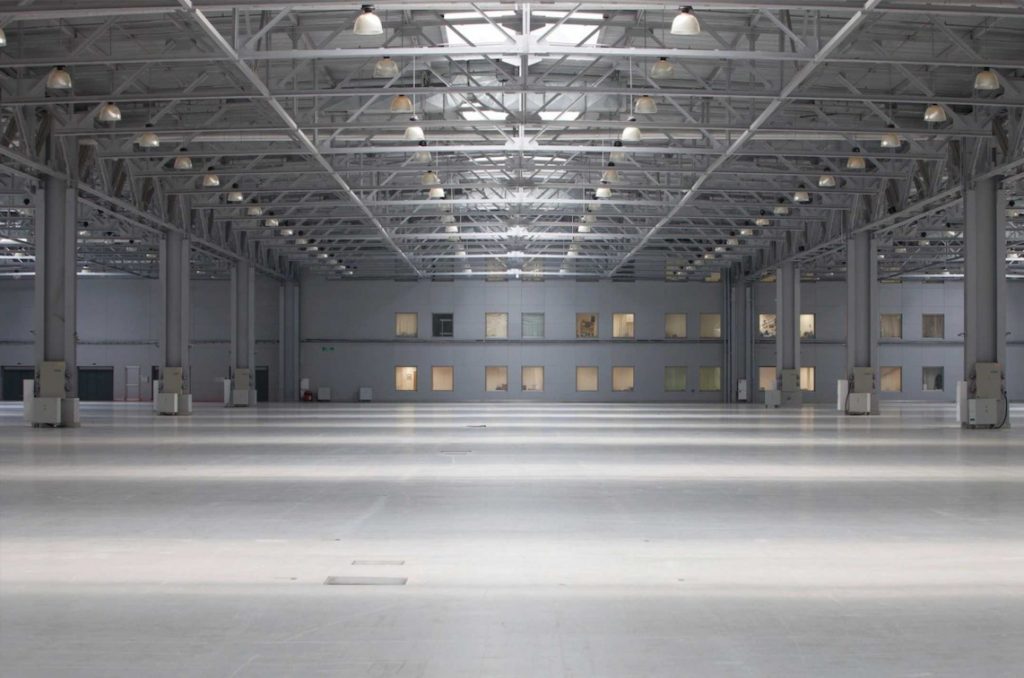
Host Chad Griffiths is joined by Marty Shiff, president of Toronto-based Rooflifters, to explore the factors which go into increasing clear heights on existing industrial buildings to make them more suitable for some modern tenants.
Among the topics they delve into are what types of buildings are suitable for roof raising, how the process works and timelines and costs.
Rooflifters is a specialized company that hydraulically raises the roofs of low-clear-height buildings to create less costly additional cubic footage. The firm caters to the industrial and retail markets.
The interview was conducted during a live broadcast, so comments and questions from listeners will appear in the accompanying chat window.
Source Real Estate News EXchange. Click here to read a full story

Supply chain and industrial/logistics expert Matt Carroll returns to offer updated perspectives and insights into the most recent trends and developments in the sector.
Among the topics discussed with host Chad Griffiths are falling transportation costs and the impact on the warehouse market where some product shortages are ongoing, and other current trends.
The interview was conducted as part of a live session, so comments and questions will appear in real time in the accompanying chat window.
Carrol is multilingual (English, Spanish and German) and has an in-depth understanding of the complex dynamics of supply chain after spending more than a decade managing operations in the U.S., Canada, the Netherlands, Germany, Australia, Hong Kong, Shanghai and Shenzhen,
Having lived in Latin America for over 12 years, the United Kingdom for two years and the United States for over 20 years, as well as having worked extensively throughout Southeast Asia and Western Europe, Carroll approaches his work with a multicultural perspective.
A graduate of Purdue University, where he also played on the men’s basketball team, Carroll was a four-time Academic All-Big Ten honouree, the recipient of the Distinguished Scholar-Athlete award for outstanding academic achievements and the Ward Lambert academic award.
Carroll previously worked for VOXX International as a logistics manager, Klipsch as a logistics manager and buyer, and for Target as a distribution operations manager.
Source Real Estate News EXchange. Click here to read a full story

I recently participated in my first Twitter Spaces discussion; essentially a call-in show on social media with hundreds of participants listening in and chatting.
One opinionated investor told the panel that industrial is headed for a crash. The market was too hot and industrial construction was booming, with tens of millions of square feet being built across Canada.
He had a number of salient facts that raised concern for industrial CRE, which were all true! And yet I completely disagree with his conclusion.
I’ve heard this skeptical sentiment about industrial from brokers as well; that surprised me as I tend to be more pessimistic than deal-makers in real estate.
And at my most recent conference, I fielded several questions along the lines of “can industrial really keep this up?”
Bear and bull arguments for industrial
I think it can, but let’s outline the bear argument for industrial:
- Construction is at record high levels, triple the level of five years ago. Absolutely true: construction was high relative to long-term trends even before COVID, and it’s higher still now.
- Rent growth cannot continue at the current pace. Some major markets are seeing 40 to 60 per cent yearly rent growth. At this rate, rents will be doubling every two years which isn’t sustainable.
- Cap rates have dropped too much for industrial relative to other assets. This is also true; rates have dropped more than any asset class over the past 10 years and are now among the lowest ever recorded.
And yet . . . I am still bullish on industrial, even conceding all those points. How can that be?
While construction is high, it’s still a very small percentage of the overall inventory.
Even with record high square feet under construction, this accounts for only ~2% of the total inventory in the country, which is in the billions of square feet of space.
If all the construction were miraculously completed tomorrow morning, we would still have a tight industrial market, well below “balanced.”
And other major markets have far higher levels of development underway – in some U.S. metros like Atlanta or Dallas, the number is closer to seven or eight per cent.
Blackstone / Pure a big player
Foreign investors have developed an appetite for Canada industrial, with big private equity (PE) and institutional investors getting involved.
Blackstone, the world’s largest PE firm (mainly via its subsidiary Pure Industrial in Canada) has been the No. 1 acquirer of Canadian industrial space during COVID.
While we see unprecedented prices for industrial rents, it’s all relative – compared to London, Singapore, Los Angeles and other world markets, our rents look reasonable.
The unrest in Ukraine has also motivated some investors to redirect capital to the safety of North America generally and Canada specifically.
Additionally, the Canadian dollar has depreciated considerably in the past year (down about 12 per cent), making investment more attractive for those with Euros, Swiss francs or U.S. dollars.
Finally, there is a huge shortage of development land around most cities. Montreal, Toronto and Vancouver all have some form of “greenbelt” or farmland protection, which drastically restricts sprawl beyond a certain point.
Land constraints just one factor
These land constraints define the industrial market and the constraints aren’t going away.
Removal of the greenbelt would be a seismic shift from the status quo and even more development-minded governments don’t seem to have an appetite for that change.
The fundamentals of industrial are so outrageously strong that we’re seeing unprecedented situations across the country:
- Yearly rent growth in Montreal exceeding 60 per cent;
- Vancouver achieving record high rents in Canadian history;
- Availability rates below one per cent in many markets;
- Canadian cities among the strongest major industrial markets in the world.
While this situation won’t sustain forever, I still see a positive outlook for industrial in the near term.
The bigger question for industrial going forward is the future of e-commerce.
The industrial market is not driven by “old economy” industries such as resources, chemicals or manufacturing.
Instead the warehouse boom is based upon fulfillment centres for online purchases, covering everything from food to clothes to electronics to home furnishings.
E-commerce less mature in Canada
While e-commerce had been growing for years, COVID obviously supercharged the movement to shopping online.
This drove a tremendous expansion of the biggest players like Amazon, Costco, Walmart and the grocery giants in the suburban areas of most Canadian cities.
E-commerce usage has flattened out in 2022, foiling the predictions of unlimited growth. The reopening of shopping, entertainment and travel have dampened the share of dollars spent online.
And the e-commerce system is stretched, with shortages of warehouse workers and delivery drivers.
Nonetheless, e-commerce is less mature in Canada than in many other developed countries; concepts like same-day delivery or online grocery are relatively new to the market here, but are standard in the U.S. and elsewhere.
There’s plenty of room to grow in the next few years and many previously “off-line” customers have discovered the ease of online shopping.
Between land shortages, investor interest and limited construction, there’s still a bright future for the industrial leasing and investment market in Canada.
Source Real Estate News EXchange. Click here to read a full story

LaSalle Investment Management’s fifth Canadian value-add real estate fund, LaSalle BVK Canada Advantage, has acquired an industrial portfolio and a multiresidential property in the Greater Toronto Area (GTA).
The acquisitions are the first capital deployments for BVK Advantage after it closed in December 2021 with a capital raise of $306 million. The fund secured commitments from institutional European capital sources and includes a co-investment vehicle.
“Well-located urban rental housing and last-mile, or small- and mid-bay industrial are our two highest-conviction, research-driven themes,” LaSalle Canada chief executive officer John McKinlay told RENX. “We’re not limited to that, but that’s certainly where we think that the best risk-adjusted returns for this fund series are at this point in time.”
With these initial acquisitions, McKinlay said BVK Advantage has a little less than half of its $306 million still to deploy.
GTA industrial portfolio
The industrial portfolio was acquired from an institutional owner and consists of eight small- and mid-bay properties totalling nearly 400,000 square feet in Mississauga and Brampton. Financial details were not disclosed.
It’s fully leased, with a weighted average lease term of just over two-and-a-half years, and has significant upside due to below-market in-place rents.
McKinlay said there’s not a lot of small- and mid-bay industrial product being built, which is one of the reasons the portfolio appealed to LaSalle Canada. Its unit sizes are in the 5,000- to 30,000-square-foot range, according to McKinlay.
While no major capital expenditures will be required for the buildings, McKinlay said LaSalle Canada will look at ways to make them more energy-efficient.
The GTA industrial market
The GTA is one of North America’s largest industrial markets at 800 million square feet, but it faces land constraints due to the environmentally protected Greenbelt that surrounds a significant portion of the region.
“You’re seeing groups buying obsolete office to knock down and build large logistics facilities, because it’s hard to get contiguous land,” McKinlay said, noting the embedded land accounts for 80 per cent of the value of the newly acquired eight-property portfolio.
The GTA industrial market has seen rents grow at a three-year compound annual growth rate of 20 per cent amid a surge in demand, driven largely by e-commerce.
“There might be a pause in terms of rents in the next little while, but I think the fundamentals and the kind of macro thesis is still very much there to support these types of investments for us,” McKinlay explained.
75 Eastdale apartment acquisition
The multiresidential property at 75 Eastdale Ave. includes a 15-storey, 253-unit apartment building along with 16 two-storey townhomes in the Danforth Village area in Toronto’s east end. It’s 96 per cent leased with a unit mix that includes studios, one- to four-bedroom apartments and townhomes.
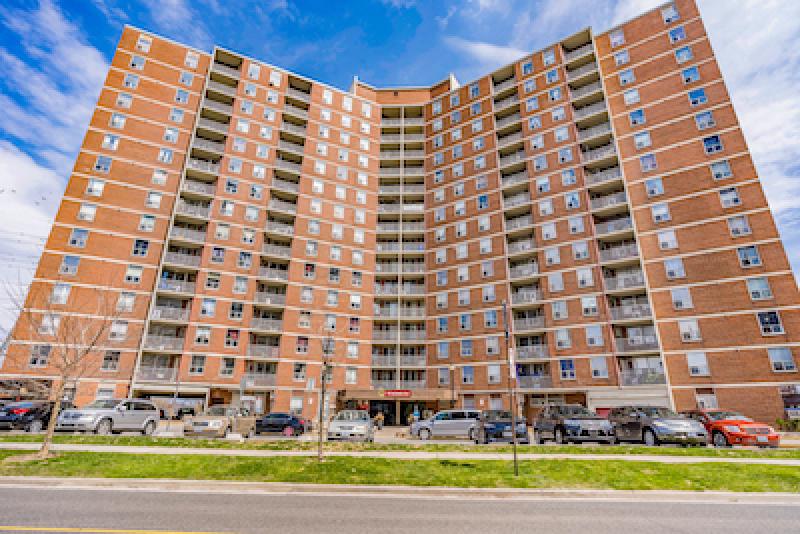
The property was acquired from CAPREIT for $90.1 million.
LaSalle Canada will undertake select unit and common area renovations for 75 Eastdale in an effort to make it more attractive to renters and increase its occupancy rate.
There’s limited apartment supply In 75 Eastdale’s immediate area, which offers close proximity to public transit, retail, restaurants, Taylor Creek Park and employment centres.
“It has all the fundamentals that we want in terms of location, amenities and transit, and we targeted it as a gentrifying market that will continue to grow,” McKinlay said.
The Toronto apartment market
The Toronto market is projected to have 10 million people by 2046, according to LaSalle Research & Strategy. It has averaged under 1.5 per cent apartment vacancy for the past 10 years as demand has outpaced supply.
Toronto’s large amount of quality immigrants, along with high house and condominium prices, will continue to make purpose-built rental apartments in the city an attractive investment for LaSalle Canada.
“Toronto is a major global city which has one of the lowest per-capita rental housing numbers out there,” McKinlay observed.
LaSalle Canada’s investment pipeline
Chicago-headquartered LaSalle Investment Management managed approximately $82 billion of assets in private and public real estate property and debt investments as of Q2 2022.
Its clients include public and private pension funds, insurance companies, governments, corporations, endowments and individuals from around the world.
LaSalle Canada, which has offices in Toronto and Vancouver, has executed more than $7 billion in real estate transactions since 2000.
Its investment pipeline is largely focused on Toronto, Montreal and Vancouver and properties that provide rent escalations.
“We will always be looking for the best risk-adjusted returns,” McKinlay said. “We’re looking for value and we’ve always distinguished ourselves on our ability to be good with deal selection.”
Source Real Estate News EXchange. Click here to read a full story
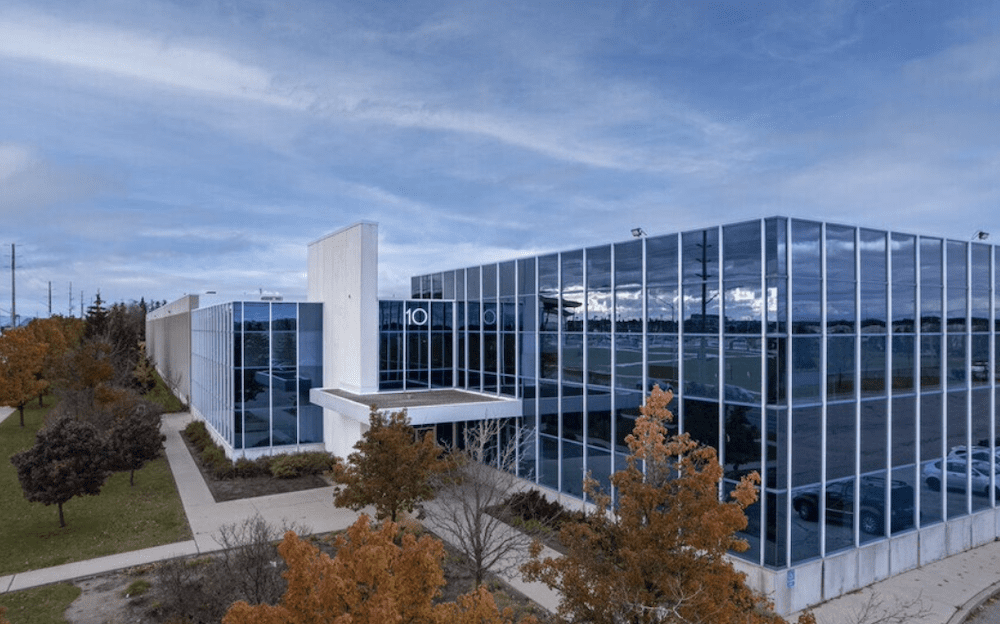
Fast fashion giant SHEIN announced earlier this month that it had opened a new 170,000-sq.-ft warehouse and office space in Markham, Ontario, marking its first-ever distribution facility in Canada. The Chinese retailer’s latest investment is a sign of the times for Canada’s commercial real estate market, which has seen steady interest and growing prices for warehouse properties.
E-commerce sales surged during the pandemic, allowing brands like SHEIN — a favourite among Gen Z — to grow rapidly. Although that rapid e-commerce growth has since tapered off, retail sales in general are still on the rise, according to the latest available data from Statistics Canada. Retail sales totalled $61.8B in August if this year, of which $3.5B was e-commerce.
The new SHEIN facility plans to capitalize on growing demand in Canada, with the new distribution centre allowing them to offer better service for Canadian customers.
“Our new facility will help us cut shipping times for Canadian customers and reduce the number of packages in the international shipping stream — delivering on two of our key business priorities,” SHEIN Canada General Manager Vito Zhong said in a press release.
Amazon has similarly expanded its Canadian footprint, announcing the construction of several new warehouses across the country. And in December of last year, Amazon announced the lease of a 100,000-sq.-ft building in Ottawa’s Hawthorne Industrial Park that will serve as its delivery station facility for the region. Purolator has also gotten in on the new warehouse action too, announcing plans to open two new facilities, including a 585,000-sq.-ft, state-of-the-art sorting facility in Toronto to allow for processing higher volumes of packages.
Despite dramatic fluctuations seen in the residential market, demand for warehouse space has remained steady, particularly in the Greater Toronto Area (GTA). In fact, Thomas Cattana, Vice President at Colliers, notes that vacancy rates are the lowest they’ve been in recent memory.
“If you look back 10 years ago, the availability rate would have been a number around 5%, and today that availability rate as of Q3 2022 is less than 1% — it’s 0.7%,” Cattana told STOREYS.
When a warehouse facility does come up for lease, particularly if it’s a good size and is close to transit routes, Cattana says you have to act quickly, as there are typically multiple groups that would be eyeing it.
Colliers was tasked with finding the GTA warehouse space for SHEIN, which in today’s market was not an easy feat. Wanting a facility that was move-in ready and around 170,000 sq. ft, there were only a few options available — one of which was the 10 Canfield Drive property in Markham that the fashion retailer ended up leasing.
“When we were working over the summer, we really only had a few options at hand,” Cattana said, “This option works excellently for what they require, but if you need a near-term availability, you’re not looking at an option list that is in the double digits.”
With higher demand inevitably comes higher prices. In the GTA, the average lease price for both commercial and industrial space was up in Q2, according to Toronto Regional Real Estate Board data. Commercial leases sat at $26.58 per sq. ft in Q2 2022, up from $20.07 one year prior. Industrial leases averaged $13.33 in Q2, up from $11.08 during the same time last year.
Although retail growth since the onset of the pandemic certainly allowed more retailers to expand their operations, increasing demand, the drying up of available warehouse spaces began long before that.
“The Greater Toronto Area industrial market has been, over the last 10 years or longer, steadily declining in availability,” Cattana said. “We typically build somewhere between 10 and 12M sq. ft per year, and every year, the market is under supplying the demand for warehouses.”
Cattana says he’s seen some creative new trends emerge that can add more warehouse space more quickly, like the construction of multi-storey warehouses.
“A site that would have typically had a 45% site coverage might have a building that is exceeding that, so that can be a way that you add more square footage to the market,” Cattana said. “There’s one that’s being developed in Vancouver right now, and there’s one that is planned to be under construction within the Greater Toronto Area.”
Warehouses are also getting taller, which allows companies to fit more product into the space, improving their cubic efficiency, Cattana noted, saying “that would ideally relieve a bit of the demand.” He points to an example of a new 40-ft-tall warehouse being built on Sheppard Avenue that replaced an older warehouse that was roughly one-third of the height.
“Now it’s going to be a brand new building that is going to meet the needs of the today’s occupier,” Cattana said.
Source Storeys. Click here to read a full story

Canada’s longest street is back in action.
On Thanksgiving weekend, more than half a million people walked along downtown Yonge Street — a figure that’s higher than during the same weekend in 2019, before the pandemic would turn the city into a ghost town.
This is according to the Downtown Yonge Business Improvement Area (DYBIA), which has a pedestrian counting system that it monitors and regularly posts statistics on their website.
“I don’t think I was surprised is the right word; I think I’m pleased,” Pauline Larsen, interim Executive Director of the DYBIA, told STOREYS. “We are beginning to see that recovery is not linear. We didn’t know what was going to happen at the beginning of the year; it was still pretty quiet at the beginning. It wasn’t until spring when we really started to see an uptick.”
Larsen references the intro of new retailers into the area this year: IKEA opened its first urban format store in May, Congee Queen found new downtown real estate, and Uncle Tetsu also moved into the neighbourhood.
While the streets around downtown Yonge are alive and well again, we are not at pre-pandemic levels; Thanksgiving weekend was a bit of an anomaly.
“The neighbourhood foot counts are still tracking 10-15% below 2015,” says Larsen. “It was significantly better than 2020 or 2021, but we weren’t at pre-pandemic levels. So, when we got the Thanksgiving numbers back, we were really excited because we saw that the numbers were actually higher than they were for the same period in 2019.”

While weekend tourists inevitably played a role in this, Larsen says that the foot traffic surge can be attributed to a variety of factors as well. For example, students have returned to Toronto Metropolitan University (formerly Ryerson University), workers are back in offices, the neighbourhood has a significant residential population, and conferences — like the recent Green Building Festival held at the Marriott CF Eaton Centre — have returned to neighbouring hotels.
“All these things combined have made a significant difference,” says Larsen. “We have seen through the pandemic that a lot of the residents still shop in the area. In the downtown core, Toronto’s offices are at 35% of their occupancy rate. It’s not impressive, but it’s way better than the 10 to 12% figures we saw before.”
In terms of retail, the Eaton Centre — one of the neighbourhood’s crown jewels — lost fewer businesses than street front retailers. “Several times a year, we have an audit of our retail vacancies and occupancies to try to get a handle on where to focus support, manage retail recruitment, etc.,” says Larsen. “Based on the latest figures from the summer, there was a 14% retail vacancy rate, which isn’t unexpected after a two and a half year pandemic. The street retail vacancy rate was 19%, compared to 9% in malls, so we’ve seen a greater hit from the pandemic on street level retailers. But 14% overall is better than they would expect, so we’re grateful.”
Larsen says she hopes the trend continues into the holidays. “We’re seeing a lot of people embracing in-person events,” she says. “And the Barbara Ann Scott skating trail is opening for the season on November 26. Our lesson is that recovery isn’t linear; it’s going to go in fits and starts. But we’re happy to see upticks and think they’re becoming more frequent. The holiday season will be proof of the pudding.”
Source Storeys. Click here to read a full story

The architects and builders redeveloping Cambridge Suites Hotel at the edge of Toronto’s financial district say their plan is going to take construction techniques in the city to a whole new level. It looks like they’re not exaggerating.
The development proposal for the 21-storey property on Richmond Street East near the city’s soaring bank towers starts with the removal of the 1990 postmodern building’s peaked roof.
In its place will be an additional 50 storeys, bringing the new project to a height of 757 feet (230.85 metres), head-to-head with neighbours such as the Toronto-Dominion Centre (731 feet).
It’s a complicated project that will require a 10-metre-high bridge structure to be built atop the existing hotel where the roof is removed. The bridge will help bear the weight of the new tower, explains Len Abelman, principal at Toronto’s WZMH Architects, the firm designing the redevelopment for the property’s owner, Centennial Hotels Ltd.
“It’s not a common technique, it’s challenging. We worked with a firm called RJC Engineers to do simulations of the massing and loading of weight and the lateral forces the building will face, to make sure it will work,” Mr. Abelman says.
“Other projects in Toronto have added floors before, but it’s usually done with a big exoskeleton that goes over the entire building. This one uses technology that transfers some of the weight to the columns and the floors of the existing structure below,” he says.
The site’s hotel, which currently offers 231 suites for business travellers, will be turned into 565 residential units with retail and commercial businesses at ground level; 42 per cent of the units will be two- or three-bedroom units to meet the city’s requirement for more family-sized downtown accommodation.
In September, the developers commissioned Bousfields Inc. to prepare a planning rationale document as they are seeking zoning and Official Plan amendments from the City of Toronto.
Bousfields explains that the current hotel is within an area of downtown Toronto that the city has designated as a “strategic growth area … for accommodating intensification and higher-density mixed uses in a more compact-built form.”
Return to office
The long-term idea is to redevelop downtown properties such as Cambridge Suites to reflect changing patterns in the way people live and work. As the pandemic ebbs and flows, people are slowly drifting back to the office, but it’s not quite a stampede.
As of mid-August, the percentage of people going to offices in Toronto was still 30 per cent of pre-pandemic levels, according to the Strategic Regional Research Alliance (SRRA), an independent research group that keeps tabs on changing work patterns.
“Putting more housing in the financial core is a real act of city-building. It will make a difference to the people who live and work there,” says Alan Vihant, president of Elan DEV Group and a spokesperson for the developers’ consortium.
“And we think there’s a way to do it by repurposing the existing building and augmenting it.”
The city’s own growth plan calls for more urban neighbourhoods that would allow for people to live near their work and get around without cars. The Cambridge Suites property is within 800 metres of six Toronto Transit subway stations, including Yonge/Queen and Union Station, which will eventually become transfer hubs for new lines.
“People are starting to come back to offices at least for three or four days a week. But they don’t want long commutes to get there, ” Mr. Vihant says.
Like virtually all new commercial construction nowadays, the new project aspires to meet better environmental and sustainability standards than older buildings. According to Natural Resources Canada, 13 per cent of Canada’s greenhouse gas emissions come from the building sector, the third- largest source of emissions.
Environmental benefits
The new tower will be more thermally efficient than the existing building and will feature bird-friendly glass and 41 square metres of green roof, says Michael McClelland, founding principal of ERA Architects, also working on the project. The project will have only 21 spaces for cars, compared with more than 570 spaces for bicycle parking.
However, Mr. McClelland cautions that the building won’t officially be a fully state-of-the-art green building because it’s incorporating the existing hotel structure into the design.
This construction technique brings other environmental benefits though; using the existing building as a weight-bearing base rather than tearing it down helps address climate change by retaining embodied carbon in the building material.
This reduces the emissions that would result from tearing down the existing structure and replacing it with a new building.
“There is nothing in the city’s current guidelines about retaining embedded carbon yet, but Toronto and other cities are catching up to this idea as they develop new sustainability rules,” Mr. McClelland says.
His firm was also asked to look at any heritage considerations that might arise from reimagining the site, he adds. But the building is only 42 years old so it is not particularly iconic or emblematic, he says.
It will likely take about 18 months to complete the zoning process with the city and up to six years to complete the project, Mr. Vihant says. But WZMH’s Mr. Abelman says the redevelopment is already embracing the future.
“This weight-bearing technology we’re using is the technology of the 2020s – I’m not sure it would have been possible even a few years ago,” he says.
Source The Globe and Mail. Click here to read a full story













